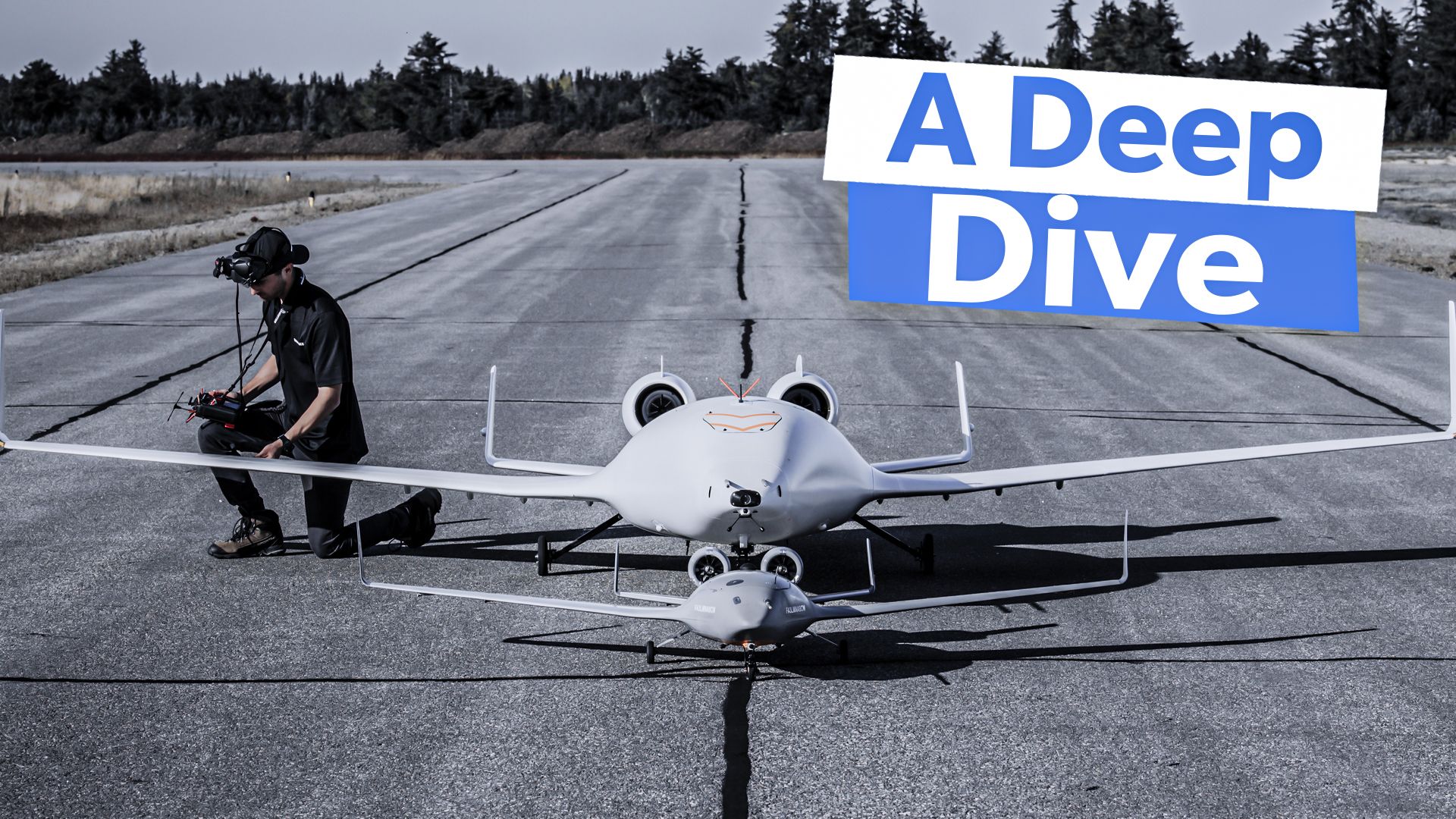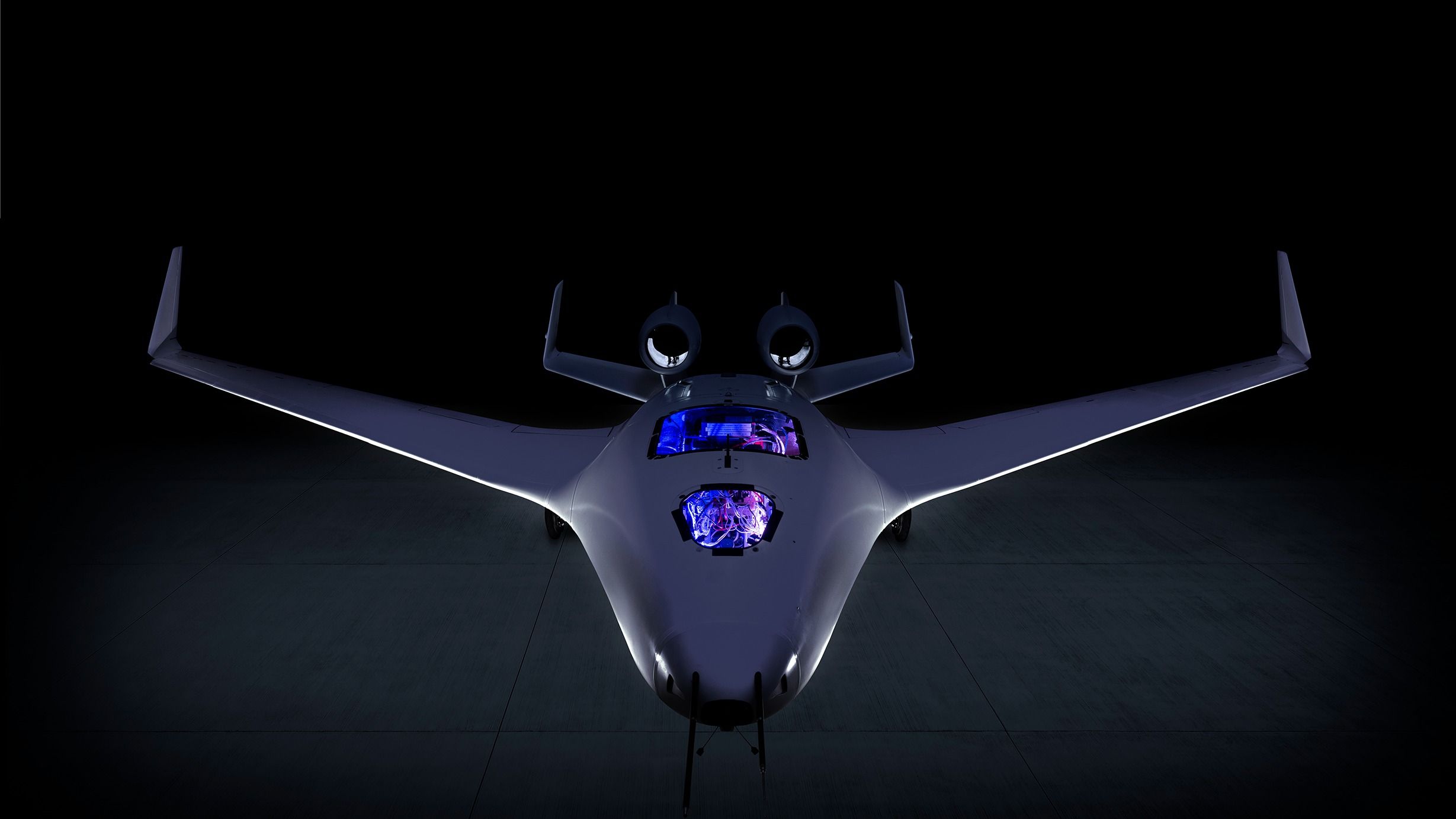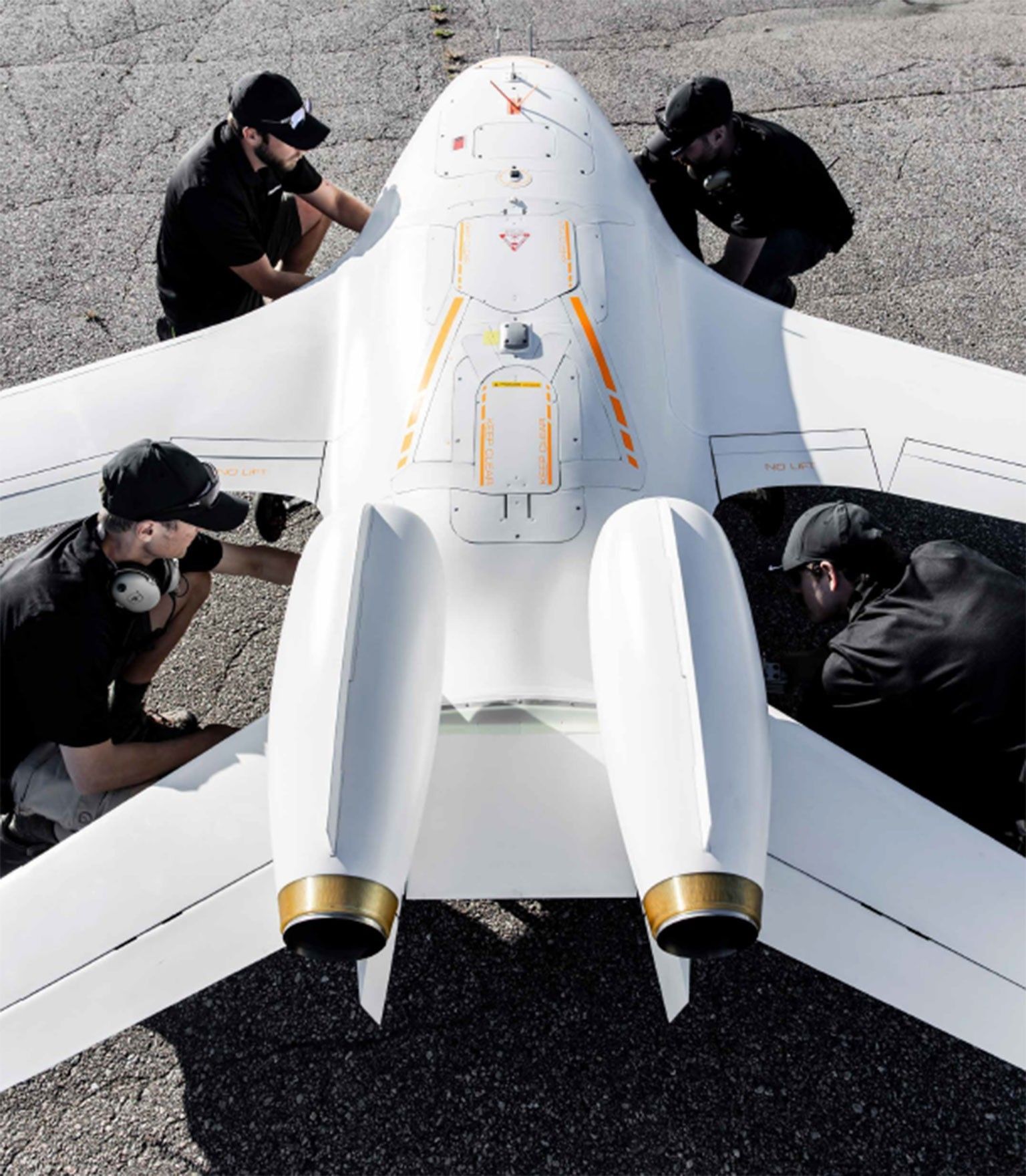Summary
- Bombardier’s EcoJet Research Project aims for sustainable flight design with a Blended Wing Body scaled design at 16%.
- The company plans to optimize energy efficiency and reduce environmental footprints in business aircraft.
- Phase two of the EcoJet program leverages data from previous phases and aims for more sustainable aircraft designs.
Bombardier
engineers and technicians have been busy performing a series of flight tests on its latest Blended Wing Body (BWB) design. The company aims to find newer ways for sustainable flying, particularly with respect to the structural design of the aircraft. As part of the EcoJet Research Project, the large-scale prototype of the EcoJet is an effort to move away from conventional designs and enable the (blended) fuselage to generate lift.
Bombardier’s EcoJet Research Project
Bombardier’s partners in the EcoJet Project
- The University of Victoria’s Centre for Aerospace Research (CfAR)
- British Columbia’s SME Quaternion Aerospace in Canada (primarily on the scaled test aircraft)
The EcoJet Research Project was envisioned in the early 2010s to achieve fuel and energy reduction through a combination of design, aerodynamics, and propulsion technologies. The aircraft features a blended wing design whereby the fuselage section blends with the wings and acts as a secondary lifting surface.
Powered by two rear-mounted engines, the aircraft features curved wingtip devices on both the wings as well as on horizontal stabilizers. The company began its phase one testing in 2017 using a 7% scaled aircraft.
- Blended Wing Body (BWB) scaled design
- Phase 1 test: 7% scale
- Wingspan: 8 ft (2.4 m)
Photo: Bombardier
According to the Senior Vice President of Engineering and Product Development at Bombardier, Stephen McCullough,
“It felt just like any other first flight. It followed the same processes with the same rigor and discipline,”
Irrespective of the size of the aircraft, the flight test program follows a comprehensive list of items that test the aircraft’s flight performance, including structural loads, stability, and aerodynamics.
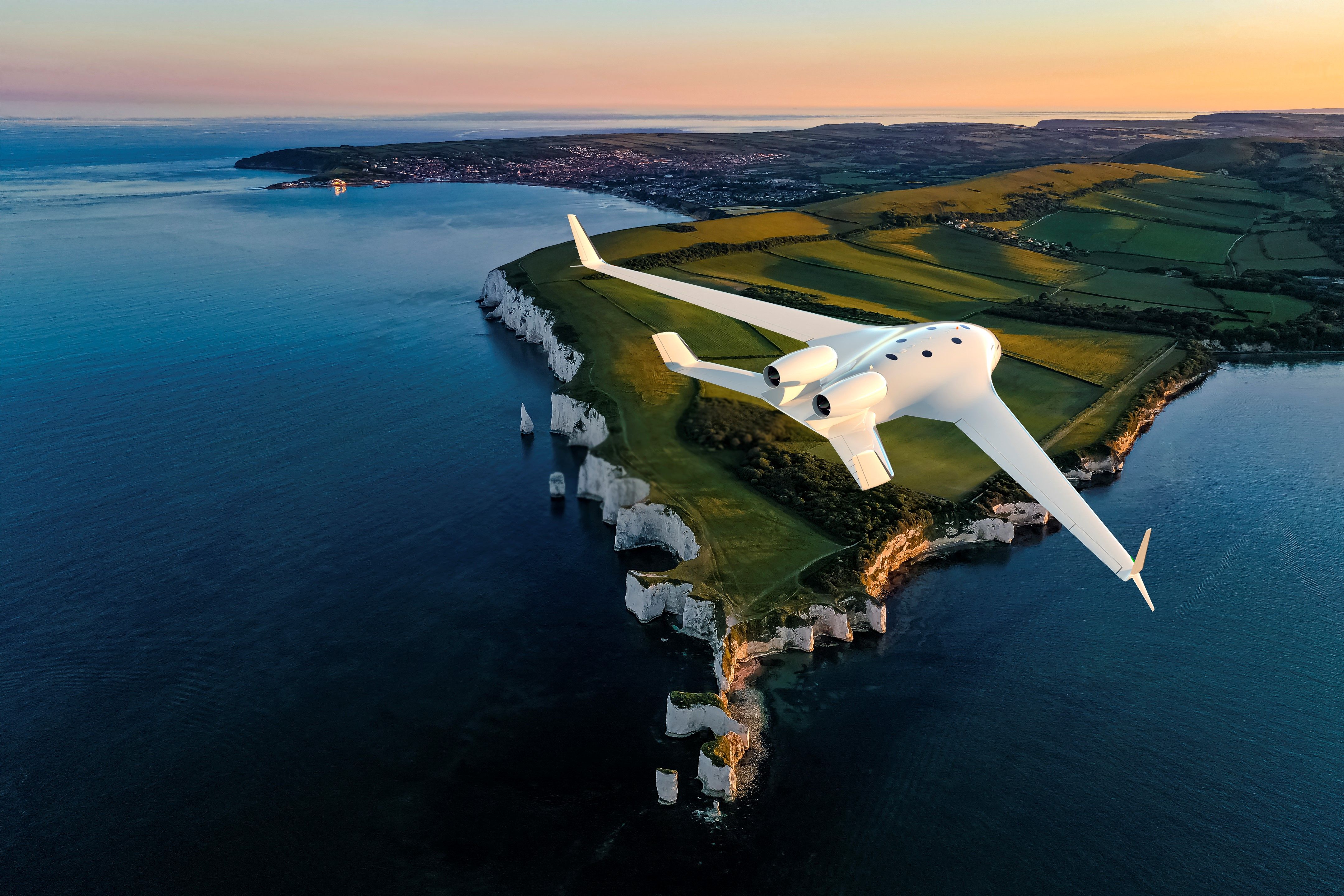
Related
Bombardier’s Blended Wing EcoJet Could Cut Private Aviation Emissions By 50%
Could this be the future of private aviation?
In May 2022, the company first publicized the EcoJet program at the European Business Aviation Conference and Exhibition (EBACE). Notably, Bombardier kept its latest design a secret for years while the team made considerable progress.
Sustainability goals
The Canadian manufacturer aims to actively participate in the aviation industry’s sustainability goals by 2050. However, sustainable aviation fuel (SAF) can not provide desirable results. As such, other avenues of design and technology must be explored to gain maximum benefit.
Photo: Bombardier
McCullough iterates the importance of sustainability by stating,
“The drive to be leaders of sustainability makes us do things differently. While aerospace has been fantastic at becoming more efficient decade by decade, the bold promise we have made to sustainability, and the technology we need to get there drives us in a different direction.”
“We see the blended wing body as a step change towards achieving our 50% goal and the aviation industry’s decarbonization goals by 2050.”
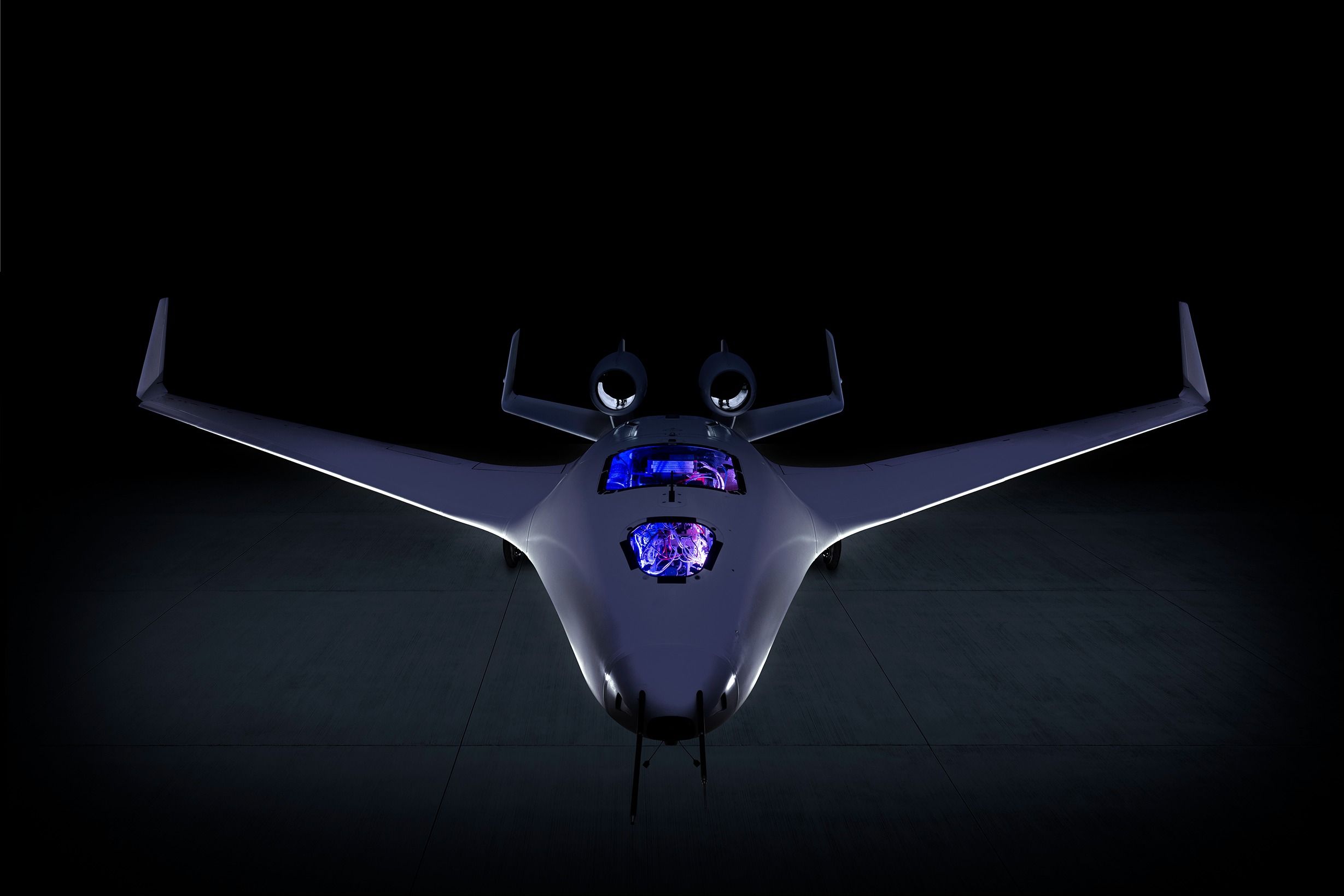
Related
5 Cool Things The Bombardier EcoJet Is Bringing To The Private Jet World
We explore how the EcoJet demonstrator’s design could impact private and business aviation.
Having the aircraft fly well above commercial air traffic will increase flight efficiency. This will avoid unfavorable weather, including turbulence, and enable greater airspeeds than currently operated.
Much focus is also given to the aircraft interior, keeping in mind customer requirements and further advancing Bombardier’s award-winning cabin design team led by Laurence Casia.
“My team is exceptionally excited about that, because we now have a completely different sand-box,” says Casia about the newer design methods the team has been implementing.
The second phase of tests
Phase two of the BWB design is conducted on a 16% aircraft model having the same design characteristics.
- Blended Wing Body (BWB) scaled design
- Phase 1 test: 16% scale (of a bombardier long-range jet)
- Wingspan: 18 ft (5.4 m)
The EcoJet flight test program’s Phase Two is filled with experiences gained not only during phase one but also from significant milestones in other Bombardier business jets, including the Global 7500.
Bombardier states that the latest 16% article is not the second test aircraft, but instead the first iteration in the second testing phase. Moreover, more than one flight test vehicle is used as it would for any regular test program. The fact that Bombardier is following a comprehensive flight test routine despite having a scaled aircraft speaks volumes of the importance of the project.
Photo: Bombardier
According to McCullough,
“Our engineers are eager to start working with the results yielded by this second phase of the flight test program. Building on the significant data drawn from the initial flight-testing phase, and now leveraging a model twice as large as the first prototype, we can further refine our analysis. With each additional experimental stage, we are paving the way for more sustainable aircraft designs and new technologies.’’

Related
Bombardier’s Blended Wing EcoJet Could Cut Private Aviation Emissions By 50%
Could this be the future of private aviation?

